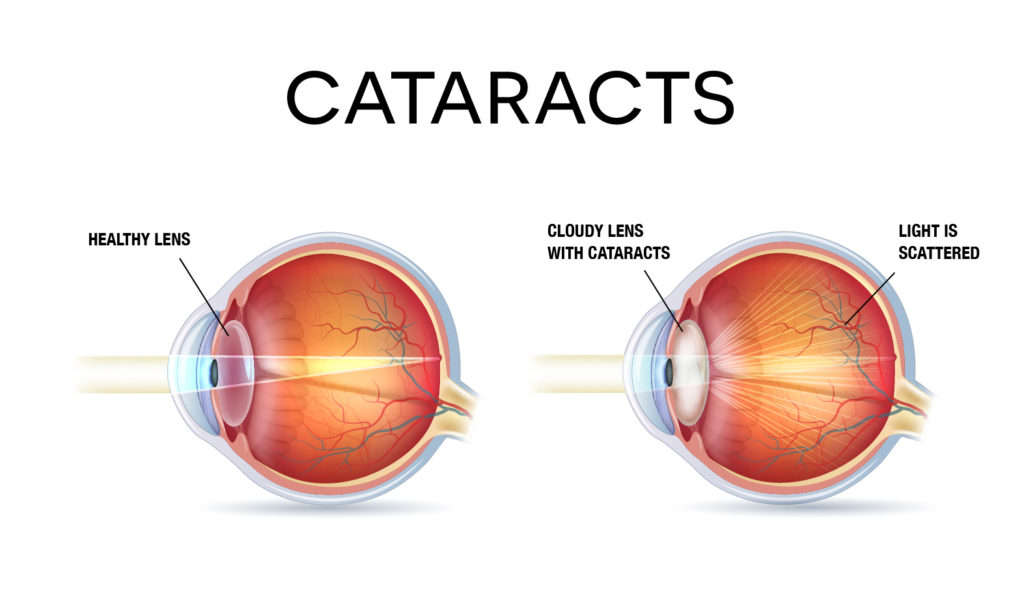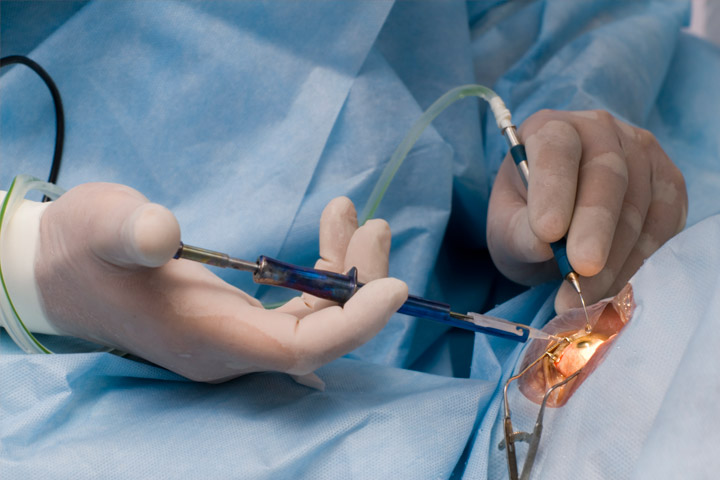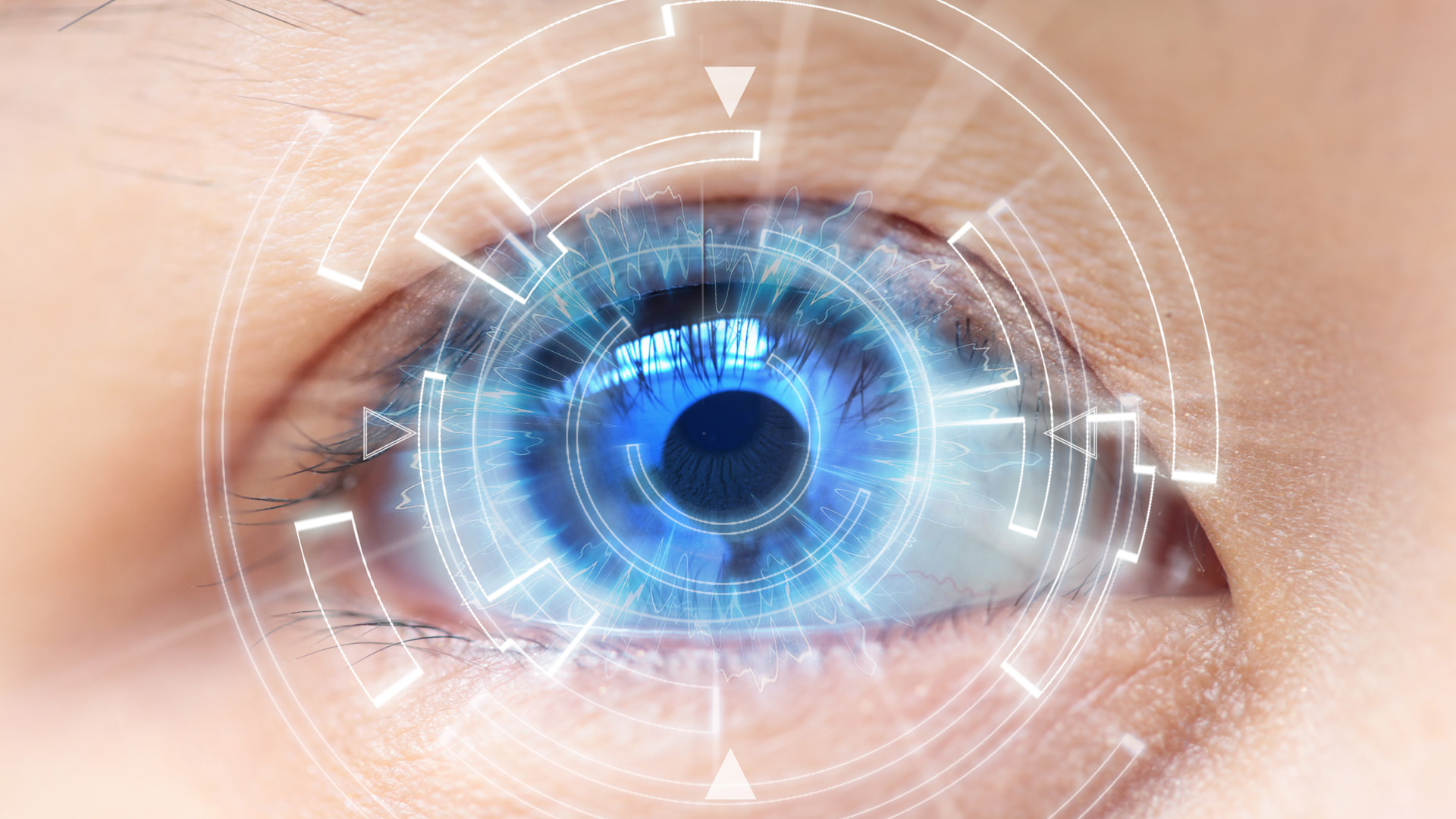WHAT IS A CATARACT?
Cataracts cause progressive, painless loss of vision. The lens clouds naturally as we age, so people over the age of 65 usually see a gradual reduction of vision. No one is exactly sure what causes cataracts. In younger people, they can result from an injury, certain medications or illnesses such as diabetes. Prolonged exposure to ultraviolet light may also play a role in the formation of cataracts. Studies have also shown that cigarette smokers have a higher risk of developing cataracts than non-smokers.
SYMPTOMS
Vision impairment is the most significant symptom of a cataract. In the early stages, if the cataract is small, you may experience little to no vision issues. However, once a cataract has progressed, the cloudiness can further envelop the clear lens, which ultimately distorts vision. Other symptoms include glare, haloes or arcs around lights. Some symptoms such as a browning or yellowing of colors occur so slowly over time that a person is often unaware of them. Patients routinely observe how bright and vibrant colors appear after cataract surgery.

AM I AT RISK FOR CATARACTS?
No one is exactly sure what causes cataracts. However, risk factors include:
- Aging
- Underlying health issues, such as diabetes, glaucoma, retinal detachment and congenital problems
- Use of tobacco, alcohol and steroid medicines
- Exposure to prolonged sunlight (UV Rays)
- Family history (genetics)
CATARACT TREATMENT
Treatment for cataracts is done through surgery, the most commonly performed surgical procedure in the United States. Cataract surgery is a minimally invasive procedure that involves numbing the eyes with anesthesia and then making a tiny incision into which an ultrasonic probe is inserted. The probe breaks up, or emulsifies, the cloudy lens into tiny pieces and then suctions them out of the eye. Once the cloudy lens has been removed, a new artificial lens is implanted into the eye. This is known as an intraocular lens (IOL) and can often be inserted through the same incision that the old lens was removed from. Typically, the surgery can be performed with topical anesthesia and mild IV sedation. Most patients do not require stitches and can resume driving and other normal activities in 24 hours. Cataract surgery is a safe and effective procedure where most patients experience little to no pain. However, as is the case in any surgical procedure, there are risks involved. Your surgeon will discuss these on an individual basis.
Contact us today to set up a consultation.
CATARACT SURGERY
A cataract is the general term given to the clouding or loss of clarity of the natural lens inside your eye. Once someone develops a cataract that interferes with their vision, and eyeglasses cannot satisfactorily improve the vision, the treatment option is surgical removal.

Lens Implantation
An intraocular lens implant is a permanent lens that is inserted into the eye after removal of the cataract. This lens – made of plastic — provides the focusing power of the eye. The strength of the implant is determined by testing taken prior to surgery. Even after a lens is implanted into the eye, it may be necessary to wear regular eyeglasses after surgery.

Toric and Multifocal Intraocular Lenses (IOL)
As technology continues to evolve, lens implant choices have evolved as well. Most patients are implanted with standard, monofocal lenses. These types of lenses give high-quality vision and are still considered the standard of care. Recently, lenses which correct astigmatism, called toric IOLs, as well as multi-focal lenses, have become more widely used.
A multi-focal lens is one that allows for ranges of near, middle and distance vision. There is an additional cost to the astigmatism correcting and multifocal lenses. Medicare beneficiaries are now able to choose these lenses but are responsible for the extra cost of the lens.
Not everyone is a candidate, nor needs a toric or multifocal IOL, and a discussion regarding the best implant choice for your eye and lifestyle will be held between you and your surgeon.
Preliminary usage of lasers to perform a portion of the surgery are being explored. Currently, laser surgery is being used to make an incision into the eye and to make an initial incision into the cataract. The remainder of the surgery is performed by the surgeon in the traditional manner. Currently, our doctors are waiting for long-term data to determine the safety and utility of laser-assisted cataract surgery.
Can I get a cataract again?
Sometimes the term “secondary cataract” is used, although this is not actually a redevelopment of a cataract. The natural lens (when clouded is called a “cataract”) is situated within a sac. The front of this sac is removed during surgery and the remaining sac holds the implant in
Contact us today to set up a consultation.

